Kevin Markham provides some golden nuggets, curious facts and scarcely believable stories about Irish golf courses that you’ll rarely hear of.
The story about Claremorris (see below) is the fuse that ignited this particular article. Chatting to the Captain on the terrace above the 9th green revealed a nugget of information I never knew. And it answered a certain question that had always been banging around my head since I first played this Co. Mayo parkland some 15 years ago.
Why are the greens so small?
It made me wonder what other little facts about Irish golf courses could lead to a ‘wow, I never knew that’ or ‘well, that’s fascinating’ moment. It might not make any difference to how we play the courses, but it could make for some interesting conversation in the bar afterwards.
Some of these you may already know… but I can guarantee that there will be many more that you don’t.
Whilst every care has been taken in compiling this list no responsibility can be taken for errors or omissions.
1 Arklow
The 14th and 18th greens are original greens from when Hawtree and Taylor designed the links in 1927. And, contrary to popular opinion, the small house on the course, between the 18th and 10th holes, was there before the course was built.
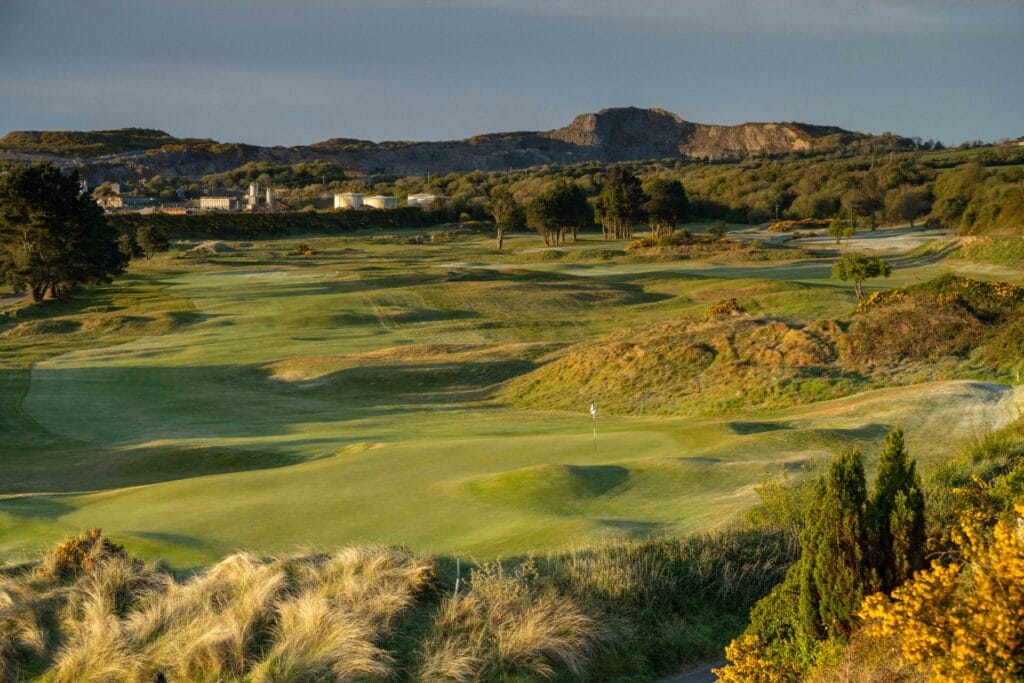
2 Ballinrobe
Ballinrobe’s famous castle, which sits adjacent to the 10th tee, was built in 1238. When the golf club moved to the site in 1995, there was a blessing of the grounds and buildings. A few days later a huge branch fell from an oak tree next to the castle. It is believed that that branch was used for many of the hangings which took place over the centuries.
3 Ballyliffin
The site of the club’s driving range was once used to launch British Army balloons during WWI, from where U-boat submarines could be spotted and reported to the Airforce.
4 Ballyliffin
During the design of the Glashedy Links, the club’s committee was stuck on how to connect the 13th and 15th holes. Pat Ruddy, in one of his most audacious design moves, broke the deadlock when he headed out and worked tirelessly over a single night to build the par-3 14th green. The following day the committee found their solution was in place in the form of a stunning green and one of the course’s most brilliant holes.
5 Balmoral & Delgany
These two clubs hold a remarkable record: both can boast four golfers who have played in the Ryder Cup. No other club can match their feat.
Balmoral: Fred Daly, David Feherty, Norman Drew, and Eddie Polland.
Delgany: Harry Bradshaw, Jimmy Martin, John O’Leary, and Eamonn Darcy.
6 Beaverstown
Every September, Beaverstown Golf Club holds a Ladies Apple Harvest Open Singles where competitors pick apples (Lord Lambourne, Tydeman’s Early Worcester, Laxton’s Fortune, Bramley Seedling’s, Allington Pippin, and Red Delicious) from the many acres of trees around the course. Apples from the Lord Lambourne trees are pressed to make 2,000 bottles of apple juice and 2,500 bottles of cider, both of which can be enjoyed in the bar.
7 Belvoir Park
The sun dial by the 1st tee is from the estate’s Belvoir House, a mid-18th century Georgian Manor, which was demolished by the army in 1969. (The demolition was named ‘Operation Lusty’)
8 Bunclody
Yes, the golf course with a lift to the 18th tee… but it is less well known for being built on top of the Newtownbarry racecourse. Newtownbarry is the former name for Bunclody. Indeed, when the founders of the new Bunclody Golf & Fishing Club bought the land, it was still laid out as a racecourse. Interestingly, the previous Bunclody golf course was located on the opposite bank of the Slaney. It ceased to exist some 75 years earlier.
9 Carlow
In 1961, Harry Ewing came up with the idea of raffling a racehorse to raise funds for a new clubhouse. The club bought London’s Gazzette, a colt sired by the 1955 Irish Derby winner, Panaslipper. The raffle generated £3,800, which was some 33% of the building cost. Not many committees have followed this route to raise funds in recent years… we can’t think why.
10 Carlow
A year after winning at Augusta (1936) and making his famous albatross on the 15th, Gene Sarazen gave an exhibition at Carlow Golf Club. On the 3rd tee, Sarazen turned to the organiser, Jim Jordan, and asked him the distance to the pin. “134 yards” came the reply. Sarazen hit his shot like an arrow and finished one yard short of the pin. Sarazen turned to Jim and said: “it’s 135 yards.” It was remeasured the next day and found to be 135 yards… the same length the hole plays today.
11 Carne
Opened in 2013, the Kilmore nine at Carne Golf Links cost roughly €200,000 to build… using just two pieces of machinery: a six-tonne excavator and a six-tonne dumper.
12 Castle Hume
Some years ago, Jimmy White was invited to play in a Charity Fundraiser at Castle Hume. Unfortunately, he found the pool table in the clubhouse before his tee time and he and his playing partners never made it as far as the golf course.
13 Claremorris
When Tom Craddock drew up plans to redesign Claremorris in the 1990s, adding nine holes, he provided drawings for 18 new greens… but the club only had the financing to build 12. The solution was to stretch that money across 18 greens, which explains why Claremorris possesses some of the smallest and trickiest greens in Ireland.

14 Clonmel
Clonmel’s Index-1 hole is the par-4 13th. As the hole curves to the right, the fairway tilts down to the left. Who can you thank for this? JP McManus. As a younger man he helped to shape the 13th and 15th fairways while working for his father’s construction company.
15 Cork
When Tom Fazio’s newly designed Quarry course at Black Diamond Ranch (Florida) opened in 1987, there was a whole hullabaloo about the uniqueness of five holes being set within a quarry. And yet such a feat had been achieved almost a century earlier, in 1898, when David Brown, a peer of Old Tom Morris, had laid out Cork Golf Club’s original four holes at Little Island. Cork’s topography includes a red marble quarry as well as the more well-known limestone one.
16 County Sligo
The club’s third nine – the Bomore course – is laid out on land that used to be an airfield. Take a look to your right as you play the Championship course’s fifth hole.
17 County Sligo
In 2014, when Pat Ruddy was creating the new third green on the Championship course, he unearthed a Silvertown gutta percha ball. The ball dates to the 19th century (between 1894 and 1900) and would have been used by a golfer playing the original 9-hole course.
18 Druids Heath
The fearsome reputation of this course is well known, but the recent redesign has made it far more accessible (and enjoyable). For starters, the number of bunkers has been reduced from 97 to 36.
19 Esker Hills
The original Christy O’Connor Jr routing didn’t last long! After only nine months the club decided that a cross-over and some extra climbing could be avoided by changing the order of the holes. If you know the course, Christy’s original routing goes as follows: 1, 2, 3, 4, 5, 6, 9, 10, 11 and 12, 13, 7, 8, 14, 15, 16, 17, 18.
20 Esker Hills
In 2000, needing a clubhouse, Esker Hills was told about a timber clubhouse for sale at Lilleshall Hall Golf Club, in Wales. Esker Hills bought it, sent over three articulated trucks to collect it and shipped back the entire dismantled structure. It is that clubhouse you will use today. What’s more, golfers from that Welsh club still come to Esker Hills to revisit their old clubhouse and, according to them, selling it was a big mistake!
21 Fota Island
Fota Island was the first ever design (1993) by the great English amateur Peter McEvoy. He admitted subsequently that he tried to create 18 signature holes… and wasn’t that surprised when the owners brought in Jeff Howes, in 2000, to reshape some of his more ‘exuberant’ greens ahead of the Irish Open.
22 Foyle
Another of the more well-known, lesser-known facts is that Amelia Earhart landed her plane on what is now Foyle’s golf course, in 1932, at the end of her solo Trans-Atlantic flight. Golf began here some 60 years later.
23 Galgorm Castle
In May 1607, King James I granted Galgorm Castle Estate to the warrior Rory Og MacQuillan, but Sir Faithful Fortescue (the Governor of Carrickfergus) tricked Rory Og out of the estate and built Galgorm Castle, in 1618. The castle is one of the finest examples of Jacobean architecture in Ireland and overlooks the 10th hole, where the remnants of MacQuillans fort can be found to the rear of the green. How a horse has not been named Sir Faithful Fortescue is beyond me.
24 Galway Bay
The European Tour’s West of Ireland Open was held at Galway Bay in 1999. It was the penultimate qualifying event for that year’s Ryder Cup. It was won by Costantino Rocca, but in second place was a 27-year-old Padraig Harrington, battling to qualify for the European side. The following week in Germany, at the final event, he came second again, scraping enough points to take the final automatic spot. He won 1.5 points from his three matches.
25 Gort
Gort is not alone in having evidence of old potato ridges on the course: in this case at the beginning of the 14th fairway.
26 Hermitage
After the Liffey flooded some years ago, a large pike was found in a bunker on the 10th hole. It had a mattress spring in its mouth. The fish was put in a case and hung in the clubhouse.
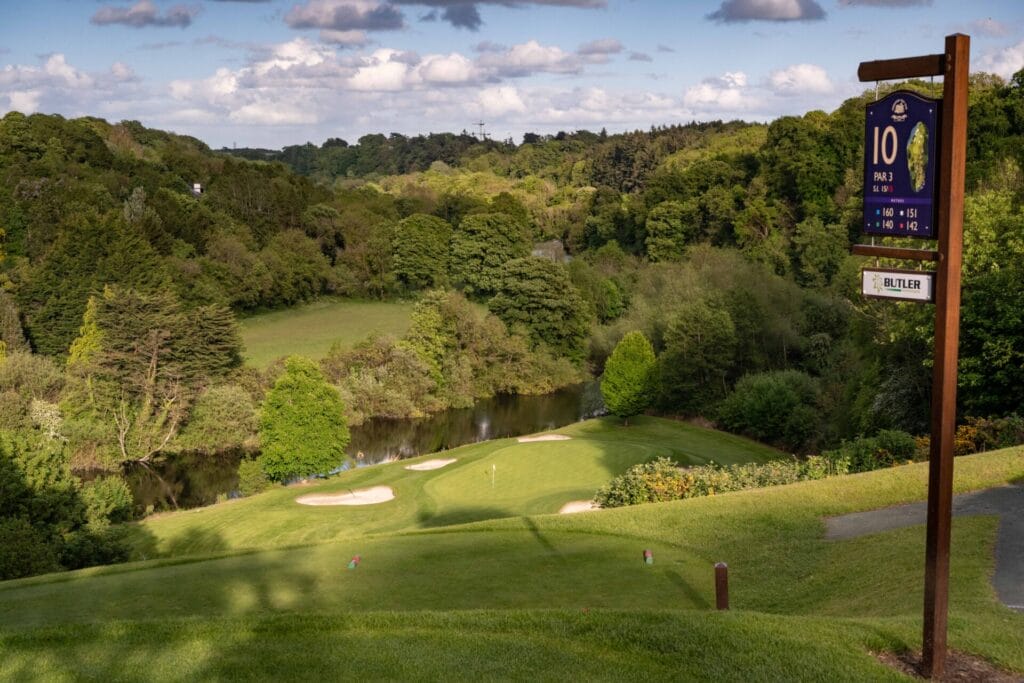
27 Lahinch
When the original founders of Lahinch (1892) set out to establish a golf club, they first set their sights on duneland some 30 kilometres south of where it is today. Next to Doughmore Strand, it is the current site of Doonbeg golf course. The reason for its now world-famous location, next to Lahinch town, came down to where the railway line terminated.
28 Luttrellstown Castle
The clubhouse’s function room is called Millenium, named after the horse buried at the back of the clubhouse. The gravestone can be seen from the car park.
29 Malahide
Malahide Golf Club holds the unique distinction of being expelled from the Golfing Union of Ireland (GUI). The expulsion lasted one full year from April 1947. At that time, Malahide, along with several other clubs, granted full membership and full voting rights to all members – men and women. Malahide had pursued such equality for 50 years. This was not acceptable to the GUI as an approved rule of affiliation and every golf club – Malahide excepted – changed their rules accordingly. It wasn’t until 1948, when the club and ladies succumbed, which resulted in the resignation of the entire Ladies’ committee. And thus it remained until the passage of equal status legislation many years later.
30 Moyola Park
Moyola Park is the only course in Northern Ireland to have been played by Seve Ballesteros. A club member invited Seve to visit. The Spaniard came in August 1980, played the course, and then gave a golfing clinic. UTV, the Ulster television station, ‘bought’ the event and showed clips of the clinic over the following weeks, thereby covering the cost of Seve’s fee.
31 Mulranny
The 9-hole links at Mulranny is the last course in Ireland where greens are enclosed by barbed wire as sheep and cattle roam the links freely. Please remember, that may not be a divot your ball is resting on!
32 Newcastle West
The clubhouse – Rathgonan House – was built in 1873. It is rumoured to be haunted, with one family that lived there claiming to have seen horse-drawn hearses rolling down the avenue at night. They sold up shortly afterwards.
33 North West
In 1967, the golf club lost two and a half holes to the sea overnight. Hosting a Pro-Am was seen as a way to raise the finance to rebuild… but hosting a Pro-Am required 18 holes. A catch 22 situation. A Pro-Am was arranged… to be held six weeks later… so the club created a par-3 (close to the current 5th) with a sand green that had no hole. If you found the ‘green’ with your tee shot, you were automatically given two putts and on you go.
34 Portsalon
In 1811, the HMS Saldanha was shipwrecked in Lough Swilly, with the loss of all 250 lives. It is believed that many of the sailors are buried beneath the mound that forms the 18th fairway.
35 Royal Curragh
There are drains under the course which were built by the British army in the mid-1800s. These are still in use by the golf club today. You might spot the manhole access to those drains as there’s one on the 15th fairway. Speaking of the army, after you’ve played the first hole look back up the fairway towards the tee and you will clearly see where the soldiers’ circular tents were situated.
36 Royal Dublin
Englishman Reg Whitcombe won the Irish Open at Royal Dublin, in 1936, claiming a gold medal and winnings of £150. Those winnings helped him build a house near Bournemouth, which he named ‘Dollymount.’ The gold medal disappeared into private hands but it came up for auction earlier this year and Royal Dublin secured it. The club now has the gold medal as well as the silver salver, which was won by Bobby Locke, the low amateur, that same year. There’s a photograph of the two of them in the clubhouse.
Incidentally, when Reg won the Open Championship the following year, his prize money was just £100.
37 Scrabo
When the golf club first opened in 1907, there were no green keepers. That job was left to a herd of billy goats. It was only after dogs chased the goats off a nearby cliff some years later that the club finally hired an official green keeper.
38 Shannon
The origins of the golf course at Shannon began with Dr William Flynn, a medic assigned to the airport in the 1950s. His accommodation was adjacent to where the 11th tee is today. A member of Lahinch, he started laying out holes and playing on the land close to his house… but he was always on call. When he was needed at the airport, a shirt would be hung out of the window to tell him to return. Back then the house could be seen from everywhere… not so today, as some 10,000 trees have now created a wonderfully wooded parkland.
39 Tandragee
In 1933, George Dixon, a member of Tandragee, achieved the feat of winning the region’s Council Cup three times in a row. He therefore got to keep the cup. He had a replica made and presented it to Tandragee Golf Club. The club misplaced it the following year. Some 75 years later the club’s Hon Sec located the missing cup. It was up for auction on eBay for £55 and is now back where it belongs.
40 West Waterford
While Eddie Hackett was the architect – creating his 100th design in 1993 – the work was done by local people, making this a golf course built by the community. When the club was purchased in 2021, that same community came together and raised the required €1.25 million. No bank loans were needed. Community spirit counts for a lot… as so many clubs will attest.
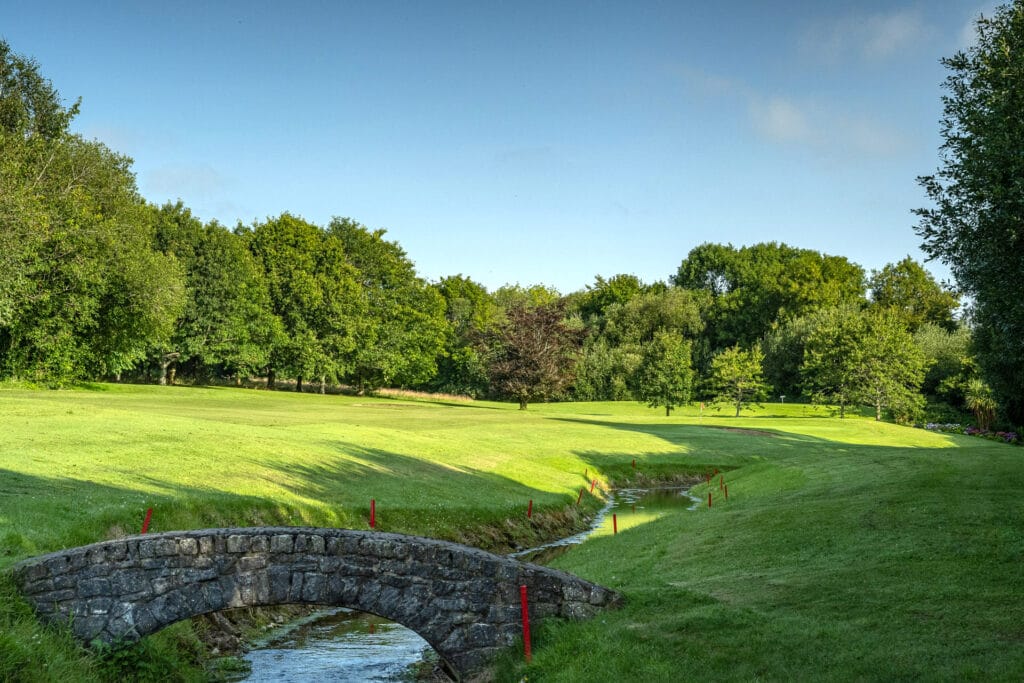

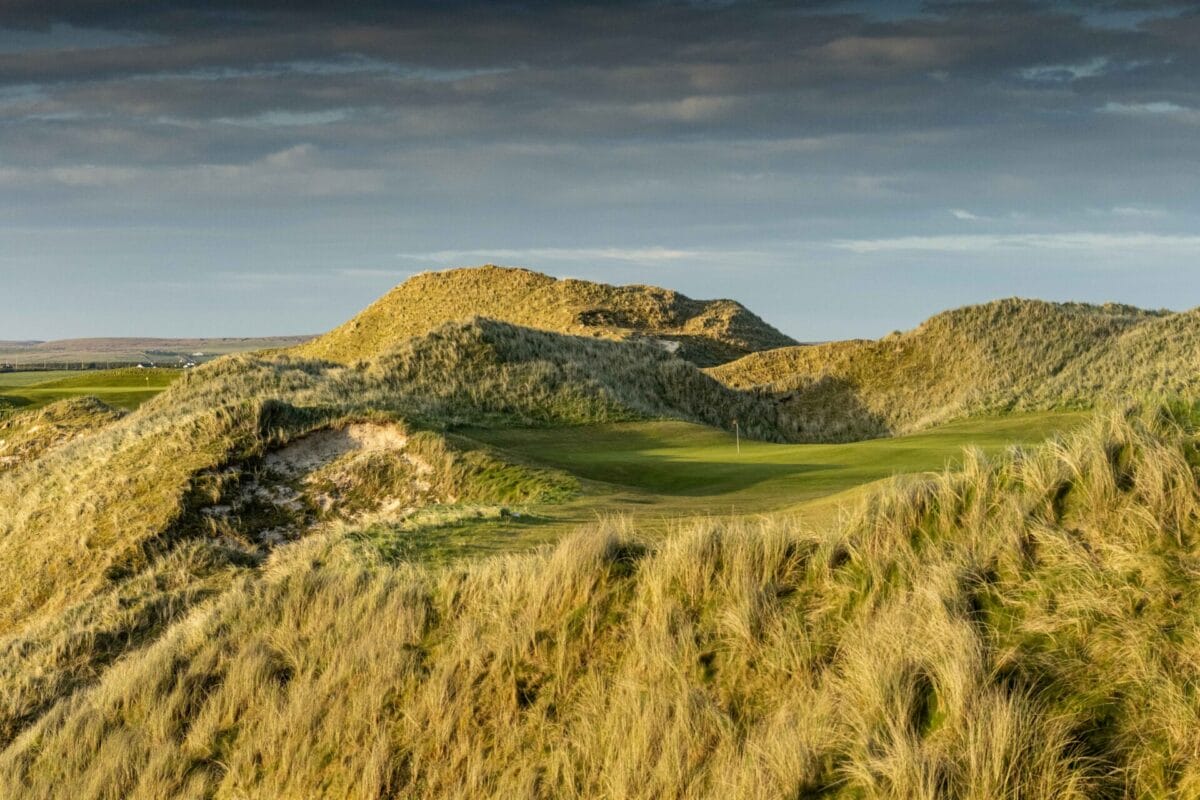










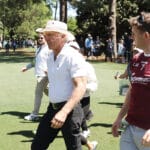










Leave a comment